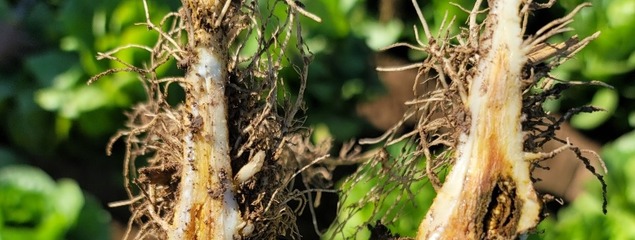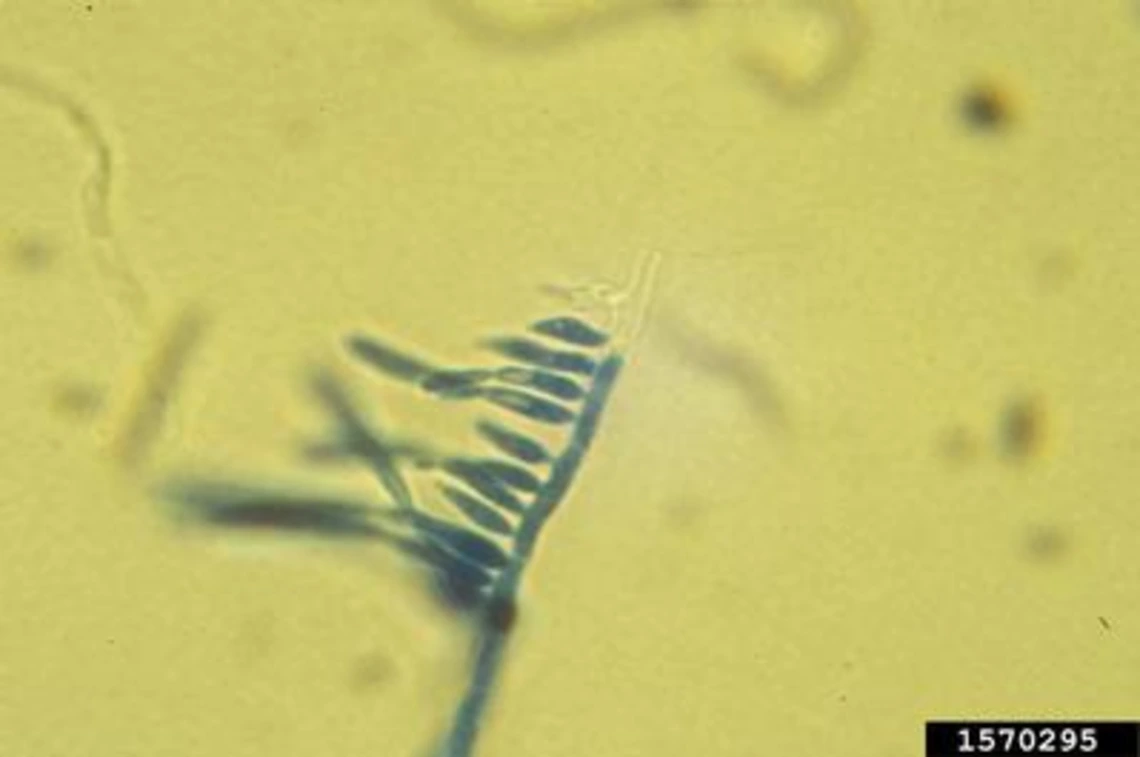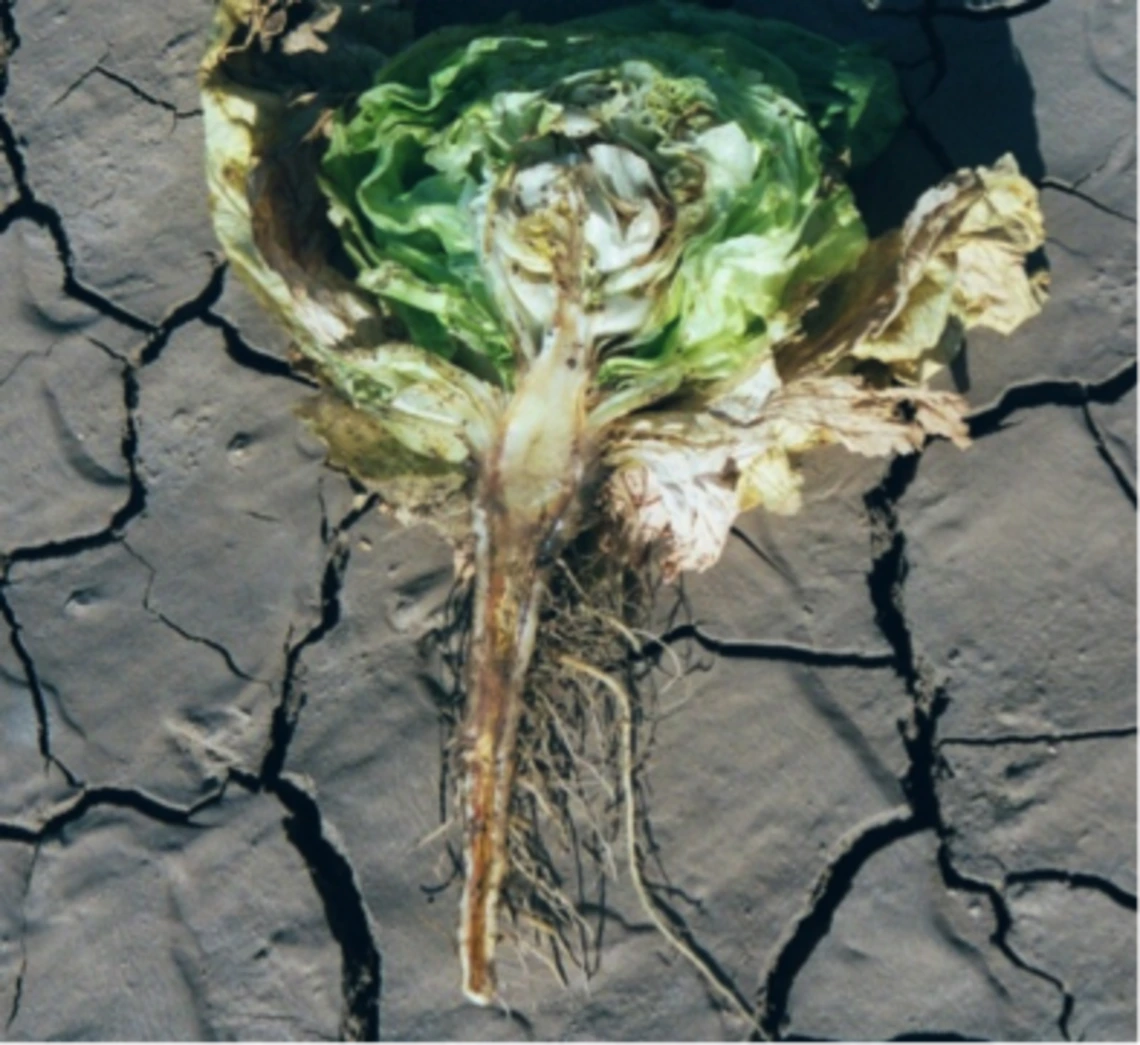
Plant Disease Management
Fusarium Wilt of Lettuce
Causal Agent
The disease is caused by the fungus Fusarium oxysporum forma specialis (f.sp.) lactucae. The forma specialis designation refers to the host range of this fungus; each forma specialis is a special form of the common soilborne fungus Fusarium oxysporum, which occurs worldwide. There are many special forms of Fusarium oxysporum, each with a unique host. The forma specialis lactucae infects only lettuce. Whereas the non-pathogenic form of Fusarium oxysporum is widely distributed, the special forms are not but only occur in areas where their specific hosts are regularly planted. All forms of Fusarium oxysporum can live off of soilborne organic matter for long periods, and consequently, once pathogenic forms are introduced into different areas, they persist in the soil for many years, even in the absence of their hosts.

The fungus infects lettuce through the root system and can infect at any stage of growth. Once inside the plant, the fungus grows up into and throughout the plant vascular system, which results in occlusion and reduced ability of the plant to move water. The tissue surrounding the vascular system also becomes necrotic. Once the vascular system is completely occluded, the plant can no longer transpire and dies.

The fungus is also seedborne and can be transported long distance to new production areas via contaminated seed. As the fungus grows in the soil and in infected plants, it produced an abundance of soilborne spores, which function as new inoculum in subsequent infections of other plants. The fungus also produces special spores known as chlamydospores, which are larger, more rounded, with thicker walls than regular spores. These chlamydospores are especially durable and can remain quiescent in the soil for many years before germination.

